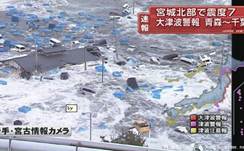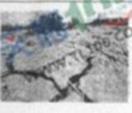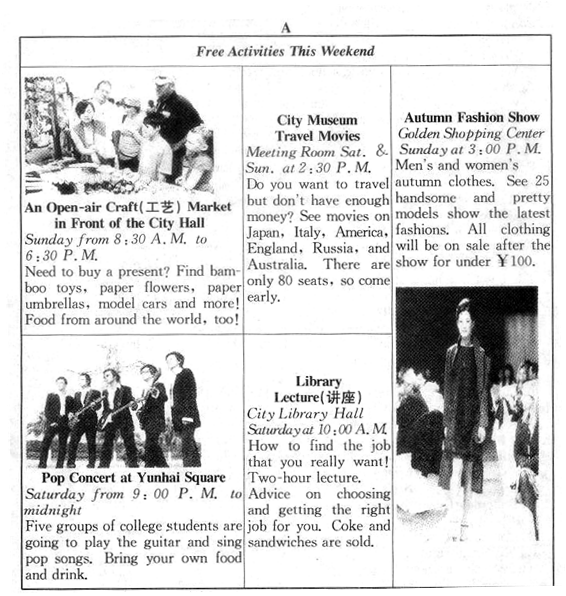题目内容
阅读短文,然后根据短文内容回答所提问题。(共5小题,每小题2分)
Two Chinese farmers sang "in the spring" in their small room after drinking in a late August evening in Beijing. A friend put their song on the Internet. And soon they became stars around China.
Wang Xu,44, is from Henan, and Liu Gang, 29, is from Heilongjiang. They areamong the millions of farmers who have gone to the cities to work.
"Although nobody pays attention to the music, I am singing happily, on streets, under bridges or in wild country, with no credit card, no girlfriend or a home with hot water, but only a guitar.” They sing, “It is just like the life we live now.” Wang said, “We are poor farmers, and you know people won’t care about us."
Their song is loved by millions of Chinese, including the people who are also from the countryside. Many people said they cried after listening to the song.
Wang came to Beijing in 2000 and has tried many jobs. Each month after he paid 600yuan for the house and bought food, there was little money left. "I love music, and also want to make more money." Wang said. "I never dreamed of standing on such a big stage.”
Liu came to Beijing in 2002. "I wanted to try my luck in the big city." He said. And now their dreams of music have come true. They are really theluckiest of all the timers inChina.
小题1:Where is Liu Gang from?
小题2: Have their dreams of music come true?
小题3: When was Wang Xu bom?
小题4:Why did Liu Gang come to Beijing in 2002?
小题5:What do you think of the two farmer singers?
Two Chinese farmers sang "in the spring" in their small room after drinking in a late August evening in Beijing. A friend put their song on the Internet. And soon they became stars around China.
Wang Xu,44, is from Henan, and Liu Gang, 29, is from Heilongjiang. They areamong the millions of farmers who have gone to the cities to work.
"Although nobody pays attention to the music, I am singing happily, on streets, under bridges or in wild country, with no credit card, no girlfriend or a home with hot water, but only a guitar.” They sing, “It is just like the life we live now.” Wang said, “We are poor farmers, and you know people won’t care about us."
Their song is loved by millions of Chinese, including the people who are also from the countryside. Many people said they cried after listening to the song.
Wang came to Beijing in 2000 and has tried many jobs. Each month after he paid 600yuan for the house and bought food, there was little money left. "I love music, and also want to make more money." Wang said. "I never dreamed of standing on such a big stage.”
Liu came to Beijing in 2002. "I wanted to try my luck in the big city." He said. And now their dreams of music have come true. They are really theluckiest of all the timers inChina.
小题1:Where is Liu Gang from?
小题2: Have their dreams of music come true?
小题3: When was Wang Xu bom?
小题4:Why did Liu Gang come to Beijing in 2002?
小题5:What do you think of the two farmer singers?
小题1:He is from Heilongjiang.
小题2:Yes, they have.
小题3:In 1966.
小题4:He wanted to try his luck in the big city.
小题5:They are really cool.
本文介绍了农民工歌手组合“旭日阳刚”。
1. 问的是地点,根据Liu Gang, 29, is from Heilongjiang可知刘刚来自黑龙江。
2. 这是一般疑问句。根据And now their dreams of music have come true可知他们的音乐梦想实现了,故为Yes, they have。
3. 本题问的是时间。Wang Xu,44, is from Henan及其代表作"in the spring"(2010年8月)可以推出出生于1966年。
4. 本题问的是原因,根据"I wanted to try my luck in the big city." He said可知他是想去大城市碰碰运气。
5. 题意问的是你觉得这两个农民歌手怎么样,答案可以多样。可以说他们很酷,也可以说他们很了不起等等。

练习册系列答案
 天天向上一本好卷系列答案
天天向上一本好卷系列答案 小学生10分钟应用题系列答案
小学生10分钟应用题系列答案
相关题目
 B.
B.  C.
C. 




 s player to reach a Grand Slam final at this year's Australian Open. "It was the first match easy or tough? Nothing between." said Li, who has defeated Zahlavpva Strycova on her way to the Australian Open final.
s player to reach a Grand Slam final at this year's Australian Open. "It was the first match easy or tough? Nothing between." said Li, who has defeated Zahlavpva Strycova on her way to the Australian Open final.


